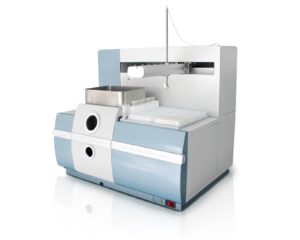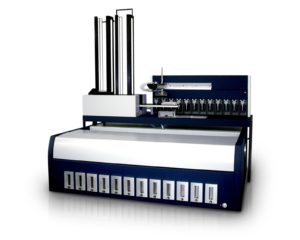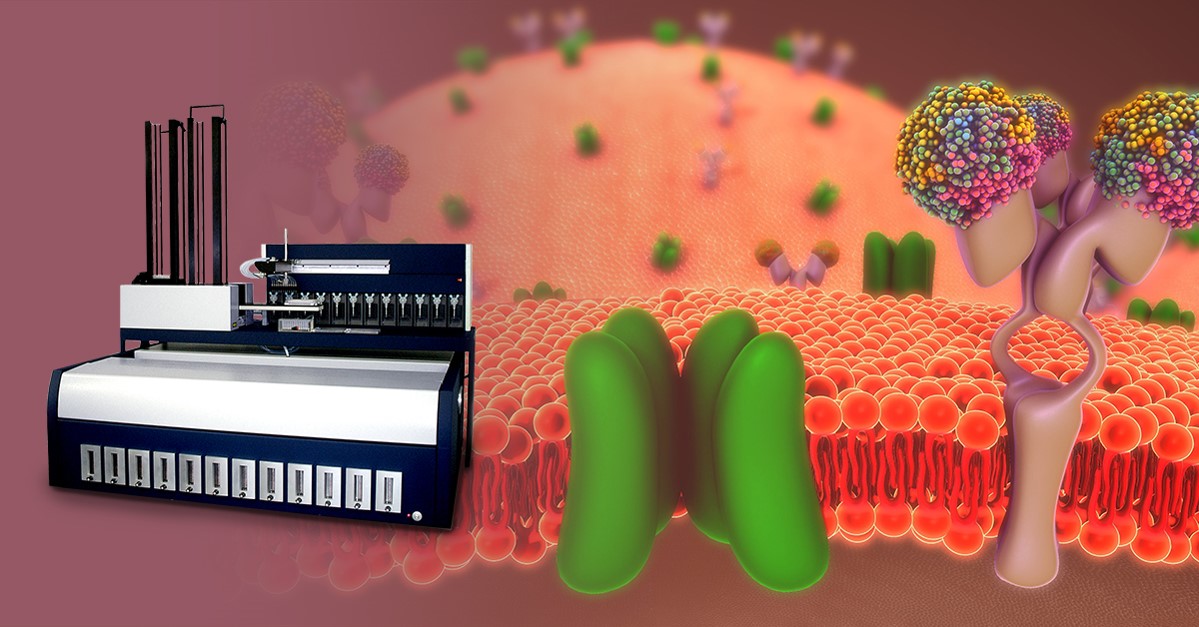Ion channels are functionally and structurally diverse membrane proteins with the ability to open and close in response to various stimuli. They play a crucial role in multiple physiological and pathophysiological mechanisms, making them attractive targets for drug development in diseases such as chronic pain, diabetes, epilepsy, cancer, and heart diseases1. Traditionally, techniques such as the gold standard patch clamp method have provided detailed real-time biophysical and pharmacological characterization of ion channels, but are limited by low throughput and complexity. Recent technological advances, notably in high throughput screening (HTS) technologies for ion channels, are set to bring about a significant transformation in this field.
Traditional Screening Methods: The Challenges
- Patch Clamp Techniques: Known for their precision and accuracy in characterizing detailed biophysical properties of ion channels, these methods—whether manual or automated (APC)—face challenges. Manual patch clamp is impeded by low throughput, labor-intensive processes, and the need for highly skilled experimenters making it less feasible for large-scale screenings. While APC improves throughput and consistency, it still requires substantial initial setup, often has high operational costs, and needs experimental optimization.
- Fluorescence-Based Assays: While offering higher throughput, these assays are based on indirect detection of changes in ion concentration or membrane potential. Although these assays are useful in various research settings, they are generally considered less sensitive compared to more direct measurement methods and have higher risks of false positives and negatives due to optical fluorescence interference during compound screening.
- Radioactive Tracers: Although highly sensitive and specific, their use involves significant safety, regulatory, and environmental hazards due to the radioactive nature of the materials.
Alternative Screening Approaches: The Rise of Ion Channel Readers (ICRs)
Ion Channel Readers (ICRs), represented by the Aurora Biomed ICR Series, illustrate a simplified and cost-effective approach designed to overcome the limitations of traditional methods.
ICRs use non-radioactive and non-toxic flux assays such as rubidium (Rb+), silver (Ag+), and lithium (Li+) utilizing highly sensitive Atomic Absorption Spectroscopy2 to detect ion concentrations as low as 0.025 mg/ml. It is cost-effective since it is a standard 96-well plate-based assay using common non-fluorescent salt solutions, and offers safety advantages by avoiding toxic and radioactive materials. These features make ICRs especially suitable for large-scale screenings, providing a robust methodological approach that is adaptable across various screening applications. ICRs also show good overlap with electrophysiological assays in detecting ion channel inhibitors. They generate reproducible data that indicates reliable pharmacological profiling.
The Future of Ion Channel Research
The need for rapid, reproducible, cost-effective screening of ion channels—crucial targets in drug discovery—cannot be overstated, especially in today’s fast-paced R&D environments where screening thousands of compounds is necessary. Aurora Biomed’s ICR Series bridges the technological gap by overcoming the limitations of conventional methods. Engineered to use non-radioactive rubidium3 as one of their main flux assays, it quantifies intracellular and extracellular ion concentrations swiftly and reliably, ensuring safety and efficiency. This technology is suitable for screening a variety of channels (both voltage-gated and ligand-gated), pumps, and transporters such as hERG4, Nav1.75, Kv1.36, and NKCC17.
Key Features and Benefits of the ICR Series:
- Enhanced Throughput: The ICR 8100 and 12000 systems deliver high throughput capabilities, allowing the screening of vast compound libraries. This is invaluable for pharmaceutical companies and research institutions looking to accelerate drug discovery and development.
- Safety and Compliance: By employing non-radioactive technologies, the ICR series ensures a safer laboratory environment and complies with increasingly stringent regulatory standards.
- Broad Applicability: These systems are not limited to electrogenic ion channels and transporters but are also capable of measuring ion activity in challenging targets such as electro-neutral pumps like NKCC1, a task that traditional patch clamp techniques struggle with.
- Precision and Reliability: Despite the high throughput, there is no compromise on the accuracy and reliability of the measurements, making the ICR series suitable for both fundamental research and applied pharmacology.

ICR 8100
5000 data points / day

ICR 12000
60,000 data points / day
As highlighted by Yu et al.8, the importance of advancing HTS technologies in ion channel research is critical. Aurora Biomed’s ICR series is at the frontier of these developments, providing validated tools that are efficient, safe, and adaptable to current research needs. As the field of ion channel research continues to evolve, technologies like the ICR series will play a pivotal role in shaping the future of drug discovery and basic science research.
Explore the frontiers of ion channel research and drug discovery with the Aurora Biomed ICR series, which represents a significant advancement in the field. Discover how the ICR series can benefit your research by visiting our website or contacting our product specialists today.
References
- Terstappen, G. C., Roncarati, R., Dunlop, J., & Peri, R. (2010). Screening Technologies for Ion Channel Drug Discovery. Future Medicinal Chemistry, 2(5), 715–730. https://doi.org/10.4155/fmc.10.180
- Wang K, McIlvain B, Tseng E, Kowal D, Jow F, Shen R, Zhang H, Shan QJ, He L, Chen D, Lu Q, Dunlop J. Validation of an atomic absorption rubidium ion efflux assay for KCNQ/M-channels using the ion Channel Reader 8000. Assay Drug Dev Technol. 2004 Oct;2(5):525-34. doi: 10.1089/adt.2004.2.525. PMID: 15671650.
- Terstappen GC. Nonradioactive rubidium ion efflux assay and its applications in drug discovery and development. Assay Drug Dev Technol. 2004 Oct;2(5):553-9. doi: 10.1089/adt.2004.2.553. PMID: 15671653.
- Chaudhary KW, O’Neal JM, Mo ZL, Fermini B, Gallavan RH, Bahinski A. Evaluation of the rubidium efflux assay for preclinical identification of HERG blockade. Assay Drug Dev Technol. 2006 Feb;4(1):73-82. doi: 10.1089/adt.2006.4.73. PMID: 16506891.
- Trivedi S, Dekermendjian K, Julien R, Huang J, Lund PE, Krupp J, Kronqvist R, Larsson O, Bostwick R. Cellular HTS assays for pharmacological characterization of Na(V)1.7 modulators. Assay Drug Dev Technol. 2008 Apr; 6(2):167-79. doi: 10.1089/adt.2007.090. PMID: 18078380.
- Liu K, Samuel M, Tillett J, Hennan JK, Mekonnen B, Soloveva V, Harrison RK, Paslay JW, Larocque J. High-throughput screening for Kv1.3 channel blockers using an improved FLIPR-based membrane-potential assay. J Biomol Screen. 2010 Feb;15(2):185-95. doi: 10.1177/1087057109356209. Epub 2009 Dec 31. PMID: 20044579.
- Gill S, Gill R, Wen Y, Enderle T, Roth D, Liang D. A High-Throughput Screening Assay for NKCC1 Cotransporter Using Nonradioactive Rubidium Flux Technology. Assay Drug Dev Technol. 2017 May/Jun;15(4):167-177. doi: 10.1089/adt.2017.787. PMID: 28631939.
- Yu HB, Li M, Wang WP, Wang XL. High throughput screening technologies for ion channels. Acta Pharmacol Sin. 2016 Jan;37(1):34-43. doi: 10.1038/aps.2015.108. Epub 2015 Dec 14. PMID: 26657056; PMCID: PMC4722985.



